| Title | Image | Page Summary: |
|---|---|---|
| Rubens - Human Figure Theory | ||
| Rubens - Human Figure - Page 1 |
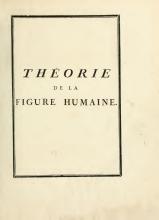
|
This is a title page from a historic text titled "Theory of the Human Figure." It suggests a focus on principles related to the depiction of the human form. The text is likely centered on academic or artistic interpretations of human anatomy. |
| Rubens - Human Figure - Page 2 |
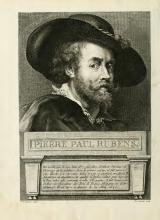
|
The text provides an overview of Peter Paul Rubens' life, highlighting his birth in Cologne in 1577, significant artistic accomplishments in Italy, and diplomatic roles in England and Spain. It notes the honors he received from various European monarchs and mentions his death in Antwerp in 1640. |
| Rubens - Human Figure - Page 3 |
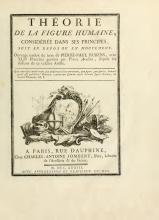
|
This is the title page for a book titled "Theory of the Human Figure," discussing the principles of human anatomy in art. It credits Pierre-Paul Rubens and Pierre Aveline for the translation and engravings, respectively, and mentions publication details in Paris by Charles-Antoine Jombert in 1773. The text includes a quote from Cicero highlighting the beauty of the human body above all other forms. |
| Rubens - Human Figure - Page 4 |

|
The text is a notice from the bookseller regarding a translation of Rubens' work on human proportions. The bookseller explains that the original translation from Latin to French was poorly done, prompting a new translation. It is clarified that Rubens never intended for the manuscript to be published, as it was merely a collection of materials. |
| Rubens - Human Figure - Page 5 |
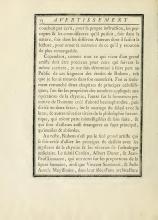
|
The text is a notice clarifying that the author is sharing invaluable fragments of Rubens' studies, although two chapters on cabalistic principles were excluded for being unintelligible and unrelated to the main subject. The document acknowledges the importance of great artists who mix design with mystical concepts. Comparable efforts by other historical figures, like Cardan and Durer, are also recognized. |
| Rubens - Human Figure - Page 6 |
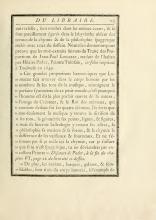
|
The text discusses the integration of alchemical and spagyric philosophy with design, exemplified by the human body’s proportions. It cites Lomazze's observations on how harmonic proportions in art reflect a perfect symmetry akin to nature and human ingenuity. The text also explores how various disciplines, including music, geometry, and astrology, find their principles mirrored in the human form. |
| Rubens - Human Figure - Page 7 |
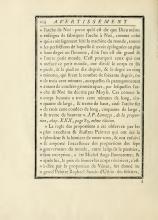
|
The text compares the measurement of the human body to the dimensions of Noah's Ark, illustrating proportions in art and architecture. It discusses how proportions have been critical in the work of illustrious painters like Michelangelo and Raphael. The focus is on the artistic rules of proportion and their significance in historical artistic achievement. |
| Rubens - Human Figure - Page 8 |
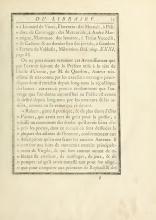
|
This section reflects on the historical influence on art, mentioning renowned artists like Leonardo da Vinci and Titian. There's an excerpt from a preface lauding the esteemed author Mr. de Querlon, highlighting the work's longstanding significance among art lovers. It also describes how Rubens, inspired by his teacher Otto Venius, incorporated poetic influences into his depictions, aligning them with ancient authors, particularly drawing from Virgil to create vivid battle and ceremonial scenes. |
| Rubens - Human Figure - Page 9 |
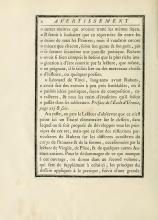
|
The text advises artists to develop their own poetic repertoire and highlights Rubens' practice of enriching his imagination through reading. It contrasts Rubens' approach with Leonardo da Vinci's similar methods and explains that the work is not a comprehensive drawing treatise but contains Rubens' reflections on human anatomy influenced by ancient literature. A second volume is mentioned as a supplementary resource focusing on the principles of design applied in practice. |
| Rubens - Human Figure - Page 10 |
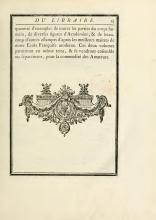
|
The text describes a collection of examples illustrating different parts of the human body, alongside various academic figures and prints from renowned masters of the modern French School. These two volumes are set to release simultaneously and will be available for purchase either together or separately for the convenience of art enthusiasts. |
| Rubens - Human Figure - Page 11 |
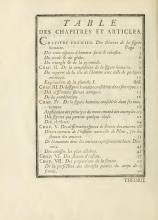
|
The table of contents outlines chapters focusing on various elements of the human figure, including principles of shapes like circles and triangles, comparisons of human and animal anatomy, and considerations of the human form at rest and in motion. It also covers topics such as ancient statues and their representations, as well as detailed discussions on the proportions of women and statues of children. The text provides a comprehensive guide to understanding the composition and aesthetics of the human body in art. |
| Rubens - Human Figure - Page 12 |
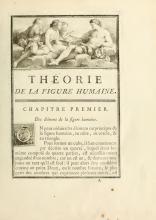
|
The text discusses the concept that the human figure cannot simply be reduced to geometric shapes like a cube, circle, or triangle. It explains how a cube is formed by starting with a square, which is made of four parts. This section begins to delve into the complexities of representing the human form in simple geometric terms. |
| Rubens - Human Figure - Page 13 |
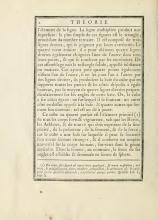
|
The text describes the theory of lines and basic shapes, starting with the triangle and moving to the square and cube. It emphasizes the cube as a fundamental form, representing strength and stability, particularly in the male body, while noting a softer, spherical form in women. The cube is explained as having six equal sides, akin to a die, illustrating its structural significance. |
| Rubens - Human Figure - Page 14 |

|
The text discusses the three types of strong human figures as seen in ancient Greek statues, with a particular focus on the statue of Hercules by Glycon the Athenian. The description covers how this statue exemplifies strength and compares it to animalistic attributes, notably in its resemblance to a lion and bull. It also highlights the features of another Hercules statue found in Rome, emphasizing its elegance yet powerful form. |
| Rubens - Human Figure - Page 15 |
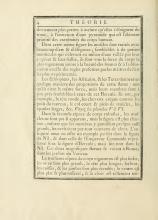
|
The text discusses the proportions and depiction of different human body types, focusing on the arrangement of muscles and physical features in art. It references the variability of body parts as they move away from the trunk, comparing them to pyramidal forms, and highlights the influence of culture on bodily representation. The text also touches on artistic representations of robust figures seen in historical statues like those of Hercules, similar in form to depictions in the Vatican gardens, emphasizing artistic elegance and precision in capturing human vigor. |
| Rubens - Human Figure - Page 16 |
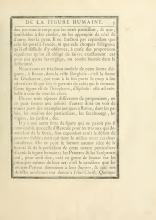
|
The text discusses the depiction of human figures, emphasizing the importance of balanced proportions to maintain elegance and prevent deformity. It cites the statue of the Gladiator in Rome as a fine example and explains how artists and sculptors have traditionally created beauty based on these principles. The text also contrasts different figure types, illustrating how characteristics attributed to figures like Hercules are used in artistic representation. |
| Rubens - Human Figure - Page 17 |
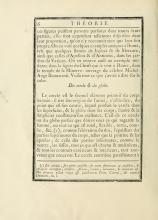
|
The text discusses the idea that geometric figures, like the circle and globe, are fundamental to the human form and are used in both ancient and modern art examples. It mentions Michelangelo's work in Rome as an embodiment of these principles. The circle is particularly highlighted as a core element in understanding the structure and function of different parts of the human body. |
| Rubens - Human Figure - Page 18 |
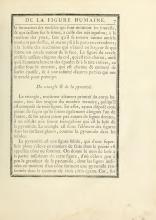
|
The text examines the human body's structural elements, focusing on the relationship between circles, triangles, and pyramids in anatomy. It describes the influence of the circle on facial features and morphology, then explains the geometric principles of the triangle and pyramid. These shapes are fundamental in understanding both planar and solid structures. |
| Rubens - Human Figure - Page 19 |
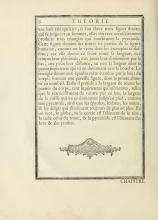
|
The text explains the geometric principles behind the human figure, highlighting how a triangular base forms a pyramid that affects various body parts. It describes how this shape dictates the form of the forehead, shoulders, and other body parts, emphasizing the significance of geometric elements like circles, cubes, and pyramids. These principles guide the dimensions and appearance of the head, trunk, and limbs. |
| Rubens - Human Figure - Page 20 |
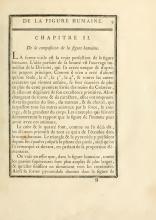
|
This chapter discusses the male form as the epitome of human beauty, crafted perfectly by the Divine. It describes how, over time, other creatures diverged from this original human form and borrowed qualities from animals like lions and bulls. The text also explains that the basic shapes of cubes and pyramids are foundational to the human body's structure. |
| Rubens - Human Figure - Page 21 |
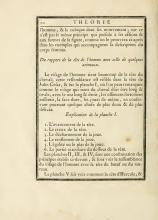
|
This section compares human facial features to those of certain animals, notably the horse and the bull. It explains how specific anatomical features like the head's shape and the cheeks are rendered. The text outlines what the plates illustrate regarding these comparisons and mentions Julius Caesar and Hercules in relation to these characteristics. |
| Rubens - Human Figure - Page 22 |
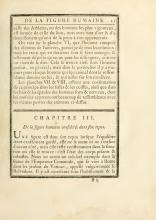
|
The text discusses the human form's resemblance to animals, particularly in the most vigorous individuals, like athletes whose form resembles a lion but is refined. It explains that while human traits share similarities with animals, these traits are crafted so subtly they're not distinctly noticeable, though certain animal traits may dominate in an individual. It also describes the concept of a human figure at rest as maintaining perfect equilibrium, using a statue of Emperor Commodus as an example. |
| Rubens - Human Figure - Page 23 |
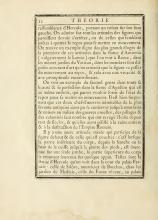
|
The text discusses notable postures observed in historical sculptures, particularly those of Hercules, Antinous, and Apollo. These figures illustrate transitions from stillness to movement, with examples found in various renowned statues. The text highlights the remarkable preservation of these masterpieces through centuries of turmoil, as well as a description of mixed postures found in some sculptures. |
| Rubens - Human Figure - Page 24 |
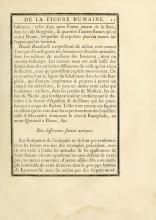
|
The text discusses various depictions of human figures and statues by artists like Baccio Bondinelli and ancient sculptors. It highlights the diverse postures and movements captured in these artworks, such as the Gladiator and children of Niobe, and contrasts them with other representations like Alexander taming Bucephalus. The passage also notes the flexibility of ancient sculptors in creating statues with varied attitudes and poses, using Laocoön as a prominent example. |
| Rubens - Human Figure - Page 25 |
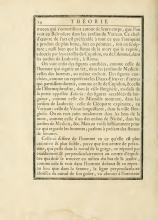
|
The text discusses various sculptures, emphasizing their expressive poses and artistic significance. It contrasts male and female figures, discussing differences in posture and balance. The works mentioned are considered superior to ancient art, representing a high point in artistic mastery. |
| Rubens - Human Figure - Page 26 |
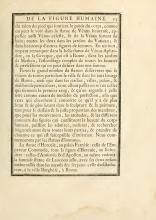
|
The text discusses various statues celebrated for their representation of the human figure. It highlights the statues of Venus and Hercules, among others, emphasizing their artistic perfection and influence. The selection not only covers those seen in Rome but also stresses the importance of understanding proportions and movements in art. |
| Rubens - Human Figure - Page 27 |
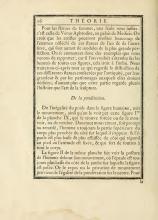
|
The text discusses the significance of the Venus Aphrodite statue, which serves as an ideal model for studying human form and beauty. It emphasizes the concept of balance in the human figure, which affects movement and posture. The text notes how variations in weight distribution lead to different postures and movements. |
| Rubens - Human Figure - Page 28 |
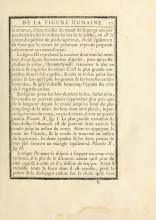
|
The text explains how the human body must be arranged for balance and flexibility. It describes how to achieve the greatest contortion, and how to position the arms and elbows for a perfect square shape, as well as an equilateral triangle when positioned differently. Additionally, it discusses how to gather strength for a forceful action by bending and turning the body appropriately. |
| Rubens - Human Figure - Page 29 |
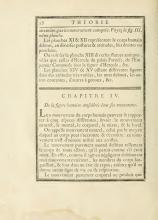
|
The text discusses different types of human body movements, including natural, mental, physical, mixed, and local movements. It mentions various plates showing figures in different postures and attitudes, with some illustrating ancient statues. The text explains the characteristics and implications of each type of movement, noting the irrelevance of some to artists. |
| Rubens - Human Figure - Page 30 |
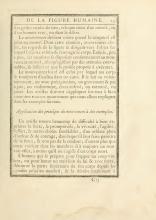
|
The text explores the concept of movement in the human figure, distinguishing between physical and mental aspects. It discusses how an artist captures the dynamics of movement, emphasizing the importance of understanding nuanced attitudes to convey strength without stiffness. Examples are provided to illustrate how these movements manifest in actions like striking or throwing, where posture and energy are crucial. |
| Rubens - Human Figure - Page 31 |
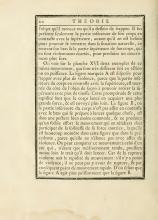
|
The text discusses the contrast between two figures and how their body positions affect the strength and speed of their movements. Figure A is more effectively positioned to use force compared to Figure B. The comparison is made with a bow, where more tension leads to a stronger release. |
| Rubens - Human Figure - Page 32 |
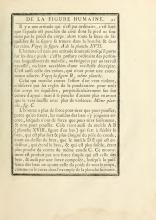
|
This text explores postures and balance of the human body. It describes how different stances affect balance, particularly under conditions like uneven weight distribution and external forces like the wind. It also examines the mechanics of pulling versus pushing, focusing on specific muscles and how leverage affects strength. |
| Rubens - Human Figure - Page 33 |
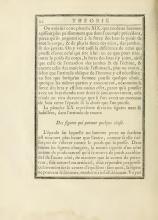
|
The text discusses the dynamics of body mechanics, illustrating how combining arm strength with body weight enhances power in movement. It explains the difference in body mechanics between pulling and pushing, emphasizing the role of body posture. Additionally, it describes how weight distribution affects balance when carrying loads. |
| Rubens - Human Figure - Page 34 |

|
The text discusses Leonardo da Vinci's observations on human balance and weight distribution, particularly when a person carries a load. It describes the importance of the shoulder's position while carrying a burden and how balance involves distributing weight effectively. The explanation includes concepts of simple and composite balance as fundamental to understanding human motion and rest. |
| Rubens - Human Figure - Page 35 |

|
The text discusses the concept of composite balance, using Hercules and Antaeus as an example of counterbalance in carrying a load. It then explores the proud and sublime nature of athletes' movements, referencing depictions by Virgil. The imagery of Dares in a battle stance illustrates the physicality and grandeur of such figures. |
| Rubens - Human Figure - Page 36 |
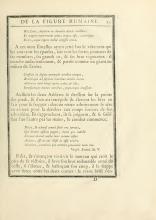
|
The text describes a scene where Entellus casts off his cloak, revealing his strong physique, and appears formidable in the arena. Both athletes bravely prepare to fight, skillfully avoiding each other's punches. In a dramatic confrontation, one stands up against a bull, delivering a powerful blow that breaks the skull. |
| Rubens - Human Figure - Page 37 |
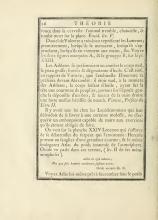
|
The text describes artistic representations of wrestlers by Daniel of Volterra and discusses ancient athletes' customs, referencing historical figures like Dinocrates and Laocoon. Vitruvius and Roman laws against physical softness are mentioned along with observations on mythological figures Hercules and Atlas. The discussion centers on attributes of strength, agility, and mythical challenges in art and society. |
| Rubens - Human Figure - Page 38 |
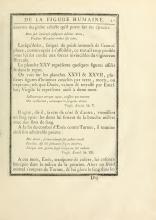
|
The text discusses mythical references from Greek mythology, particularly focusing on Atlas and his burden of carrying the celestial globe, with Hercules taking over this labor. Further descriptions explore figures on plates depicting rest and battle, drawing from Virgil's Aeneid. The narrative involves themes of struggle, defeat, and describes the intense scenes of battle, particularly between the characters Aeneas and Turnus. |
| Rubens - Human Figure - Page 39 |

|
The text discusses various aspects depicted in several plates, highlighting how they demonstrate artistic principles related to body lines, particularly in deceased figures and angels. A specific work by Rubens is mentioned, modeled after an ancient bas-relief. Additionally, the text elaborates on different types of ancient statues, categorizing them by size and their representation of natural proportions. |
| Rubens - Human Figure - Page 40 |
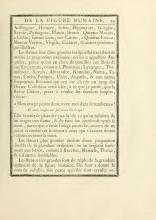
|
The text describes how large statues, or 'Augusts,' were dedicated to historical leaders and figures and were considered significant if they exceeded the standard size. Mentioning Queen Dido's lament, it notes the ancient customs of granting statues only to heroes, not those who chose death. Very large statues were known as colossi. |
| Rubens - Human Figure - Page 41 |
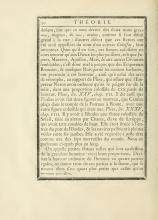
|
The text discusses the origin and appropriateness of colossal statues. It explains their Greek etymology and links them to powerful deities, contrasting with Roman Emperors' inappropriate claims to such symbols. Additionally, it touches on the proportional differences between large and small statues, referencing historical examples from Pliny. |
| Rubens - Human Figure - Page 42 |
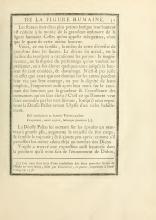
|
The text discusses the varying sizes of statues, attributing smaller sizes to practicality and larger ones to the magnificence or dignity of the person represented. It cites Homer and Virgil, illustrating how grandeur was conveyed in ancient art and literature. The passage also references an example involving the Goddess Pallas and Ulysses, indicating the symbolic use of statues and monuments to honor notable figures. |
| Rubens - Human Figure - Page 43 |
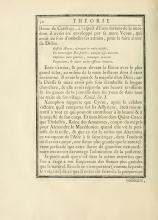
|
The text discusses the appearance of Aeneas as he emerges from a cloud, made by Venus to look divine, to charm Dido. It reflects on the emphasis on beauty and majesty, similar to how Cyrus and Alexander the Great were portrayed, with larger-than-life statues to enhance admiration. The text suggests that this tradition continued with Roman Emperors' statues. |
| Rubens - Human Figure - Page 44 |
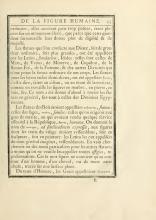
|
The text discusses the types of statues made for gods, heroes, and notable figures. It explains the different terms used in Latin and Greek for these representations, based on their subjects and the materials used. The text also clarifies how statues differ from other forms of portrayal, which capture outlines on flat surfaces. |
| Rubens - Human Figure - Page 45 |

|
The text discusses ornamental statues, known as simulacra, used in temples and their naming conventions. Larger statues were referred to as signa, whereas smaller ones were called sigilla. The text also describes ancient busts, referred to as hermae or flemmata, and how they were traditionally used around tombs and in homes as symbols of nobility before coats of arms were invented. |
| Rubens - Human Figure - Page 46 |
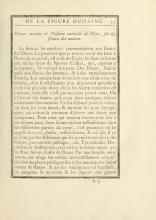
|
The text discusses the historical use of bronze in making statues, beginning with statues of gods and eventually humans. It highlights the custom of creating statues to commemorate those whose actions merited immortality, especially in context of Olympic victories. The widespread adoption of this practice, which started in ancient Rome and Greece, also included inscribing bases to perpetuate the memories of significant figures. |
| Rubens - Human Figure - Page 47 |
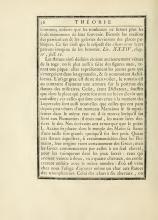
|
The text discusses how tombs were replaced by statues as monuments of remembrance, evolving into public displays in galleries and homes. It explains the transition of sculptural practices from Greek to Roman, focusing on clothing styles and the addition of armor to statues. Equestrian statues originated from the Greeks, and the tradition expanded to include chariots for victors with multiple horses. |
| Rubens - Human Figure - Page 48 |
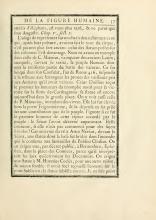
|
The text discusses the customs of representing victorious figures on chariots and statues in ancient Rome. It highlights various historical figures and their monuments, such as C. Moenius, Caius Duillius, and M. Horatius Cocles, emphasizing their achievements and the public honors conferred to them. The narrative reflects on the tradition of erecting statues in recognition of victories and public contributions. |
| Rubens - Human Figure - Page 49 |

|
The text discusses various ancient statues placed near the speaking platform in Rome, including those of the Sibyl, Romulus, and other historical figures. It notes the significant backgrounds of these figures and the honors given by the Republic. Included is a mention of Cn. Octavius and his notable interaction with King Antiochus. |
| Rubens - Human Figure - Page 50 |
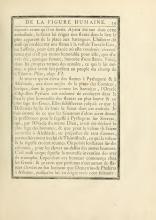
|
The text details the honor attributed to individuals by erecting statues for them, citing examples from history including a female vestal, Pythagoras, and Alcibiades. It highlights the practice of honoring individuals with statues and triumphal arches, a tradition that started in Greece. The passage also mentions Demetrius of Phalerum, who had numerous statues in Athens. |
| Rubens - Human Figure - Page 51 |
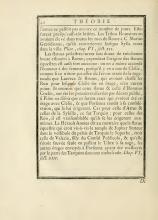
|
This text discusses the history of statues in Rome, mentioning both pedestrian and equestrian statues. It highlights the respect given to women with the statue of Clélie and contrasts the stories of various sculptures related to Roman history, such as those of Lucrece and Brutus. The passage also includes interpretations of historical accounts of statues and notable figures like Valeria and their broader political implications. |
| Rubens - Human Figure - Page 52 |
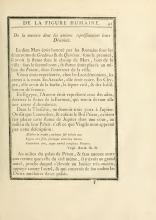
|
The text discusses how various ancient cultures represented their deities. Mars had statues in different locations in Rome, Venus was depicted with varying attributes across regions, and Cupid in Egypt was shown with wings. Additionally, in Thessaly, Jupiter was illustrated with three eyes, and the text references Virgil's description of an altar in Priam's palace. |
| Rubens - Human Figure - Page 53 |
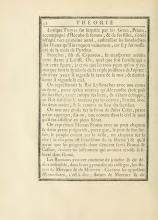
|
The text discusses various historical and mythological figures and their artistic representations. It mentions Priam's tragic fate in Troy, the symbolic meaning of a statue with three eyes representing Jupiter, and depicts King Lysimachus, Julius Caesar, Marcus Brutus, and Roman cultural practices. These portrayals emphasize symbolism, cultural narratives, and historical events. |
| Rubens - Human Figure - Page 54 |
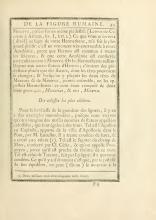
|
The text discusses the Hermathena, a statue combining Hermes and Minerva, suitable for an academic setting. It explains that these statues were akin to pedestals with interchangeable heads. The text also explores famous colossal statues, highlighting their impressive sizes and craftsmanship. |
| Rubens - Human Figure - Page 55 |
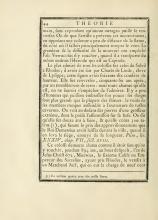
|
The text discusses the remarkable colossus of the Sun at Rhodes, created by Chares of Lindos, a student of Lysippos. It explains the construction and later destruction of the statue by an earthquake, highlighting its enormous size and the awe it inspired even in its fallen state. The statue remained undisturbed for centuries until it was finally sold by a Saracen Caliph to a Jewish merchant. |
| Rubens - Human Figure - Page 56 |
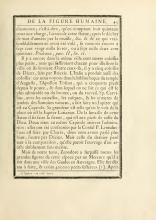
|
The text discusses various ancient statues and their remarkable sizes and significance. It mentions notable figures like the Tuscan Apollo and a Jupiter statue, emphasizing their grandeur and the craftsmanship involved. Additionally, it highlights Zenodorus's extraordinary Mercury statue from the time, known for its size and cost. |
| Rubens - Human Figure - Page 57 |
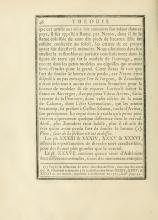
|
The text discusses an artist's remarkable talent which led to creating a colossal statue for Nero in Rome and explores the idea that casting bronze had become a lost art. The passage also mentions how the artist precisely replicated classical features from ancient works. A reference is made to Zenodore's skills and the continuous tradition of these ancient art practices. |
| Rubens - Human Figure - Page 58 |
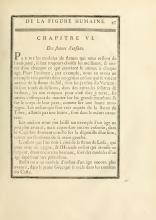
|
The chapter discusses selecting the best ancient statue models to represent different ages, focusing on childhood. Examples include playful child-like figures around the statue of the Nile and children with the statue of the Tiber. It further describes mythological representations of child-like figures such as Cupid and young Hercules. |
| Rubens - Human Figure - Page 59 |
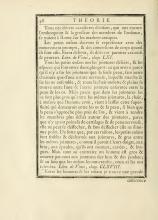
|
The text discusses the characteristics of young children's limbs and joints, illustrating how their physical form is portrayed in art. It contrasts children's features with those of adults, noting children's plumpness and looser joints compared to the more defined structures of adults. References to Leonardo da Vinci highlight the observations on anatomy and growth. |
| Rubens - Human Figure - Page 60 |
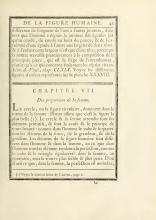
|
This text discusses the differences in the proportions of the human body, specifically focusing on the lengths from joint to joint. It references Leonardo da Vinci and describes how, in nature, the main part of the body, which is the center of understanding, is prioritized over other areas concerning vital spirits. Additionally, it covers Plato’s view on the most beautiful shape for women and how the elements of human figures differ between men and women, emphasizing the difference in perceived strength and perfection. |
| Rubens - Human Figure - Page 61 |
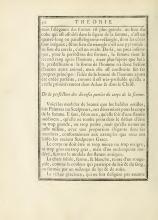
|
The text discusses the elegance and perfection of forms, asserting that women are second to men in this regard but hold unique qualities. It provides models of beauty for the female body, emphasizing balance and proportion according to ancient Greek standards. The description includes guidance on body tone, skin color, and facial features to align with artistic ideals. |
| Rubens - Human Figure - Page 62 |
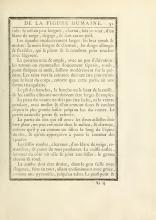
|
The text outlines the ideal characteristics of the human figure, focusing on the neck, shoulders, chest, waist, hips, back, buttocks, legs, and feet. Each body part is described in terms of shape, size, and texture, with an emphasis on symmetry, firmness, and elegance. The aim is to capture an idealized form that balances proportion and grace. |
| Rubens - Human Figure - Page 63 |
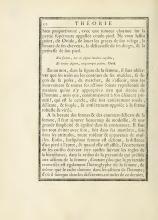
|
The text discusses the ideal representations of female form, emphasizing roundness, delicacy, and suppleness as opposed to masculine robustness. It highlights the importance of modesty and proper demeanor and suggests that posture should follow the symbolism of shapes like the pyramid and circle. The ideas draw on both artistic and philosophical interpretations of form in the context of beauty and propriety. |
| Rubens - Human Figure - Page 64 |
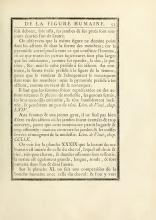
|
The text discusses the representation of the human figure, comparing the geometric principles that govern the depiction of males and females. It emphasizes modesty and propriety in the portrayal of women, citing Leonardo da Vinci. Additionally, it includes comparisons between the features of humans and horses, like the nose and mouth. |
| Rubens - Human Figure - Page 65 |
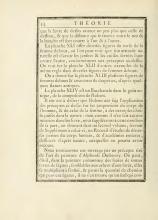
|
The text discusses the depiction of human figures based on the observations of the artist Rubens, focusing on the proportions and natural posture of the body as seen in his works. It describes various plates illustrating these concepts, and mentions the intention to provide further studies in a supplemental volume due to Rubens' lack of detailed commentary on these principles. The text ends by alluding to a painting principle by Alphonse Dufrenoy, warning of numerous possible artistic errors. |
| Rubens - Human Figure - Page 66 |
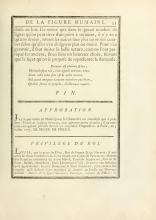
|
The text discusses the principles of depicting the human figure, emphasizing the need to imitate nature just as the ancients did. An approval note confirms the manuscript titled "Theory of the Human Figure," suggesting it is suitable for printing. It mentions a 'Privilege of the King' for publishing the work, and two poetic expressions discussing the concept of straight and curved lines. |
| Rubens - Human Figure - Page 67 |
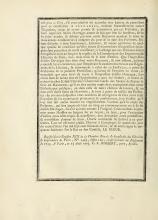
|
This document is a formal permission, issued to allow the printing and distribution of a work within the Kingdom for three years. It outlines conditions including quality criteria for printing and registration requirements, and it prohibits introducing foreign prints. The document mandates specific record-keeping and compliance with existing book regulations. |
| Rubens - Human Figure - Page 68 |

|
The image is titled "Theory of the Human Figure" and is the first plate in the series. It was drawn by Rubens and engraved by P. Aveline. This work focuses on studies of human profiles, illustrating principles of anatomy and expression. |
| Rubens - Human Figure - Page 69 |
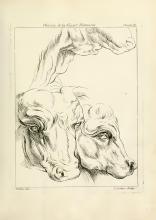
|
The image is titled "Theory of the Human Figure" and is Plate II from the series. It was drawn by Peter Paul Rubens and engraved by Pierre Aveline. The piece is part of a collection focusing on the study of anatomy. |
| Rubens - Human Figure - Page 70 |
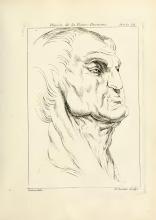
|
This is an engraved plate titled "Theory of the Human Figure, Plate III," from Peter Paul Rubens' work. The engraving is done by P. Aveline and depicts a detailed profile of a human head. The plate is part of a series exploring human form principles in art, reflecting Rubens' approach to anatomy and motion in art. |
| Rubens - Human Figure - Page 71 |
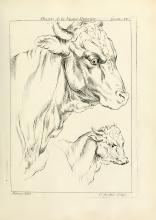
|
This page from "Theory of the Human Figure" by Peter Paul Rubens contains text indicating it is Plate IV. The drawings on this page were executed by Rubens and engraved by Pierre Aveline. The text provides credits for the artistic and engraving work. |
| Rubens - Human Figure - Page 72 |
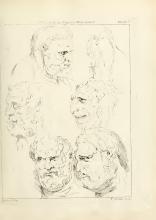
|
This page is titled 'Collection of the Human Figure, Plate I.' It indicates that the sketches were drawn by Rubens and engraved by P. Aveline. The artwork focuses on studies of the human head and facial expressions. |
| Rubens - Human Figure - Page 73 |
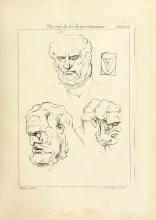
|
The image features the title "Theory of the Human Figure" and labels it as Plate VI. It notes that the drawing was done by Rubens and the engraving by P. Aveline. The page explores aspects of human figure drawing through detailed head sketches. |
| Rubens - Human Figure - Page 74 |

|
The text provides a title and details about the work and the artist responsible for the drawings and engravings. It mentions that this is "Plate VII" from a larger work by Peter Paul Rubens, with engravings done by L'Aveline. The engravings represent studies of the human figure. |
| Rubens - Human Figure - Page 75 |
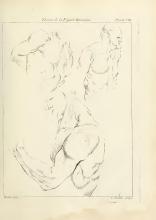
|
This page is from Peter Paul Rubens' work, focusing on the theory of the human figure. It includes an engraved image by Pierre Aveline based on Rubens' designs, demonstrating detailed anatomical studies. The text provides a title and credits the artists involved in creating the plate. |
| Rubens - Human Figure - Page 76 |
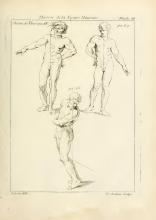
|
The page is an artistic study of the human figure featuring drawings credited to Rubens and engravings by P. Audine, based on da Vinci's work. It includes three male nude figures in different poses, highlighting anatomical details. The illustrations are labeled with annotations and reference numbers, indicating educational or instructional use. |
| Rubens - Human Figure - Page 77 |
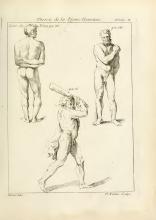
|
This page from "Theory of the Human Figure" features drawings related to human anatomy, likely influenced by Leonardo da Vinci's work. The engravings were drawn by Rubens and engraved by Aveline. It highlights both static and dynamic representations of the human form. |
| Rubens - Human Figure - Page 78 |
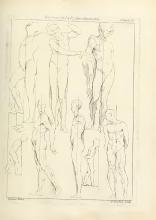
|
The text identifies the image as Plate XI from "Theory of the Human Figure," discussing anatomical principles. |
| Rubens - Human Figure - Page 79 |
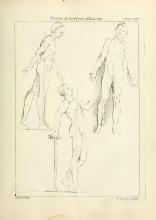
|
This page includes a plate titled "Theory of the Human Figure" from Rubens' work. It is Plate XII, drawn by Rubens and engraved by P. Aveline, showcasing human anatomy. |
| Rubens - Human Figure - Page 80 |
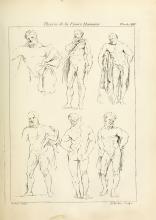
|
The page is titled "Theory of the Human Figure" and is Plate XIII from a series. It indicates that Rubens created the designs and P. Aveline did the engravings. The text serves as a caption for the sketches displayed. |
| Rubens - Human Figure - Page 81 |
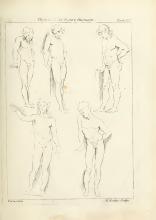
|
This page is from "Theory of the Human Figure" by Rubens, showcasing anatomical studies in an engraved plate. It includes sketches of five male figures demonstrating principles of human form and motion. The artwork is engraved by P. Aveline, based on Rubens’ designs. |
| Rubens - Human Figure - Page 82 |
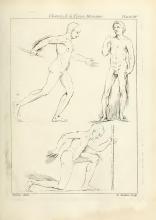
|
The page is titled "Theory of the Human Figure, Plate XV," and credits both the artist Rubens for the drawings and P. Aveline for the engravings. The drawings depict various human poses and are part of a larger work on figure drawing principles. |
| Rubens - Human Figure - Page 83 |
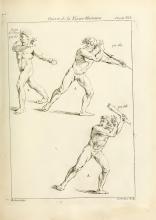
|
This page is titled "Theory of the Human Figure," Plate XVI, featuring lessons related to art on pages 58 and 60. It credits Peter Paul Rubens for the drawings and Pierre Aveline for the engravings. This work explores the human figure, particularly in motion. |
| Rubens - Human Figure - Page 84 |
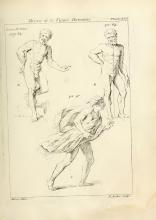
|
The text presents labels and references for illustrations on Plate XVIII of a book about the human figure. It indicates references to both Leonardo da Vinci and Peter Paul Rubens. It also specifies the artistic contribution by Pierre Aveline, who engraved the images. |
| Rubens - Human Figure - Page 85 |
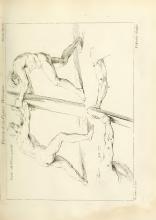
|
This illustration is Plate XCVII from a book on human figure theory. It displays the anatomy of the human body in a standing pose, meant for artistic study. The engraved plate was created for understanding muscle structure and movement. |
| Rubens - Human Figure - Page 86 |
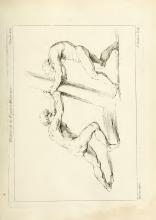
|
This page contains an illustration from "Theory of the Human Figure" by Rubens, showing two men climbing. It is Plate XIX, engraved by P. Aveline and based on Rubens' designs. The artwork demonstrates human anatomy and motion. |
| Rubens - Human Figure - Page 87 |
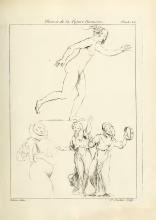
|
The page features illustrations from Rubens' "Theory of the Human Figure," specifically Plate XX. It includes drawings by Rubens that were engraved by P. Aveline, highlighting human figures in dynamic poses. |
| Rubens - Human Figure - Page 88 |
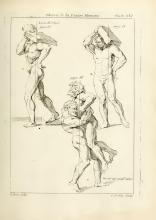
|
The plate depicts drawings based on works by Leonardo da Vinci and illustrations by Rubens, engraved by F. Aveline. It shows three male figures and includes a mythological scene of Hercules strangling Antaeus. The page references previous and next pages for additional context. |
| Rubens - Human Figure - Page 89 |
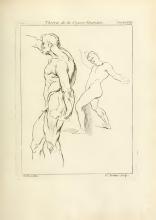
|
The image is titled "Theory of the Human Figure, Plate 22," with credits to Rubens for the drawing and Aveline for the engraving. It is part of a series on human anatomy and movement. |
| Rubens - Human Figure - Page 90 |
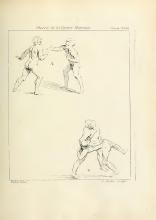
|
The image is from "Theory of the Human Figure" and features engravings by P. Aveline based on Rubens' designs. The captions indicate it is Plate 23 of the work. The focus is on human figures in motion, showcasing different poses. |
| Rubens - Human Figure - Page 91 |
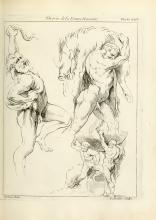
|
This page contains text in French that translates to 'Theory of the Human Figure, Plate XXIV,' noting that Rubens drew the design, and Pierre Aveline engraved it. It pertains to a series of illustrations focusing on the principles of the human form. |
| Rubens - Human Figure - Page 92 |
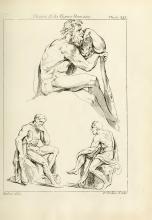
|
This page includes illustrations of a male figure in seated poses, drawn by Rubens and engraved by P. Aveline. It shows a study of human anatomy with a focus on form and expression in different seated positions. "Theory of the Human Figure" demonstrates Rubens' exploration of classical human form art principles. |
| Rubens - Human Figure - Page 93 |
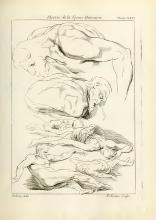
|
This page is from "Theory of the Human Figure" by Peter Paul Rubens, featuring Plate 31. It includes drawings by Rubens and engravings by P. Aveline, showcasing human figures in various poses. The work highlights anatomical details and the movement of the human body. |
| Rubens - Human Figure - Page 94 |
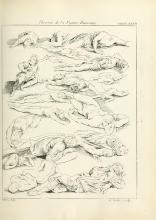
|
The image features a page titled "Theory of the Human Figure, Plate XXVII." It is part of a work dedicated to the study of human anatomy and form, illustrated by Pierre Aveline after designs by Peter Paul Rubens. This page specifically includes a series of sketches showing reclining human figures in various poses, emphasizing the artist's exploration of anatomy in resting positions. |
| Rubens - Human Figure - Page 95 |
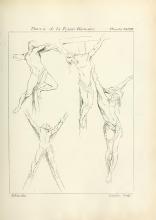
|
This page depicts Plate 28 of "Theory of the Human Figure," showcasing Rubens' studies of human anatomy. The illustrations are accompanied by attributions to Rubens as the designer and P. Aveline as the engraver. The focus is on the human figure in various poses, highlighting anatomical principles. |
| Rubens - Human Figure - Page 96 |
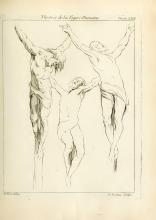
|
The image is titled "Theory of the Human Figure," Plate 39, with credits to Rubens for the drawing and Pierre Aveline for engraving. It is part of a historical art book focusing on the principles of anatomical representation. |
| Rubens - Human Figure - Page 97 |
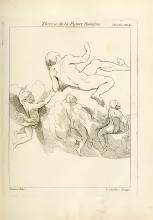
|
The text describes a section of Peter Paul Rubens' work titled "Theory of the Human Figure" and refers to an engraving (Plate 30) designed by Rubens and engraved by Pierre Aveline. It is a visual representation related to his study of the human figure in art. |
| Rubens - Human Figure - Page 98 |
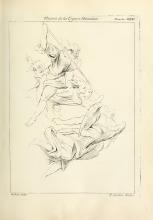
|
This image is from "Theory of the Human Figure," featuring Plate XXXI. It shows an engraving by Pierre Aveline from a drawing by Rubens. The artwork illustrates the dynamic motion and anatomy of the human figure. |
| Rubens - Human Figure - Page 99 |
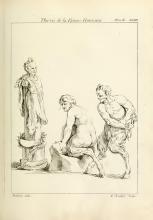
|
The image is from "Theory of the Human Figure" and is Plate XXXII. It shows engravings based on Rubens' designs and illustrates human figures in various poses. It is a study of anatomy and gesture in art. |
| Rubens - Human Figure - Page 100 |
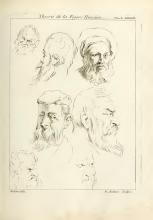
|
This page is a plate titled 'Theory of the Human Figure,' plate 33, showcasing sketches of heads. Rubens created the designs, and P. Aveline engraved them. |
| Rubens - Human Figure - Page 101 |
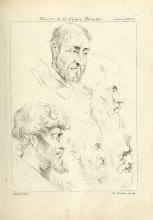
|
This page is from a work titled "Theory of the Human Figure," displaying a plate with engravings of male heads by Peter Paul Rubens and engraved by Pierre Aveline. The sketches showcase different profiles, highlighting variations in facial features. The text indicates Rubens created the original designs and Aveline executed the engravings. |
| Rubens - Human Figure - Page 102 |
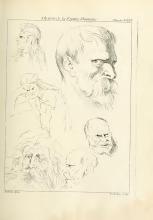
|
This page is an illustration from "Theory of the Human Figure," showing an engraved plate with sketches of male heads by Rubens, engraved by P. Aveline. It is plate 39 in a series depicting artistic studies of the human figure. The engravings highlight different expressions and styles in human facial features as studies by Rubens. |
| Rubens - Human Figure - Page 103 |
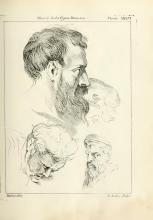
|
This page is from a series on human figure theory by Peter Paul Rubens. It shows various sketches of male heads, designed to illustrate different anatomical features and expressions. The engravings were done by Pierre Aveline, as noted on the plate. |
| Rubens - Human Figure - Page 104 |
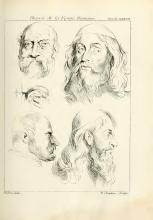
|
This page is from a work discussing the principles of the human figure in art. It is Plate 37, featuring drawings by Rubens and engravings by P. Aveline. The text identifies the creators responsible for the detailed sketches presented. |
| Rubens - Human Figure - Page 105 |
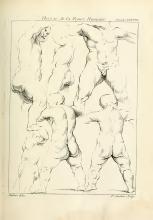
|
This page from a book contains an illustration titled "Theory of the Human Figure," specifically Plate 38. It is drawn by Rubens and engraved by P. Aveline, showcasing artistic studies of human anatomy. |
| Rubens - Human Figure - Page 106 |
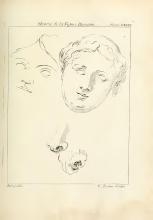
|
This is Plate XXXIX from Rubens' 'Theory of the Human Figure', featuring sketches of human faces and noses. The original work was drawn by Rubens and engraved by P. Aveline. The text provides identification of the plate and creators. |
| Rubens - Human Figure - Page 107 |
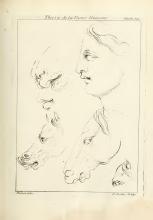
|
The page is from 'Theory of the Human Figure' and features Plate 40, illustrating drawings attributed to Rubens and engraved by P. Aveline. Rubens' works explore human and animal anatomy, conveying complex forms through detailed sketches. |
| Rubens - Human Figure - Page 108 |
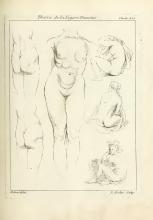
|
The page is titled "Theory of the Human Figure" and is identified as Plate XLII. The drawings were created by Rubens and engraved by P. Aveline. It features a variety of sketches illustrating the human form. |
| Rubens - Human Figure - Page 109 |
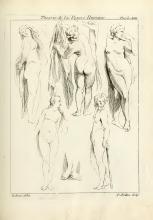
|
The text is a title and credits for an illustration from a book on human anatomy and art. It identifies the plate as number 42 and credits Rubens for the drawing and P. Aveline for the engraving. |
| Rubens - Human Figure - Page 110 |
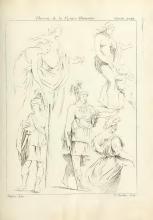
|
This plate, titled "Theory of the Human Figure," features illustrations drawn by Rubens and engraved by P. Aveline, emphasizing different poses and aspects of human anatomy. It is part of a larger work exploring the principles of depicting the human form. |
| Rubens - Human Figure - Page 111 |
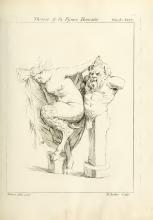
|
The text introduces Plate 44 from "Theory of the Human Figure." It credits the design to Rubens and the engraving to P. Aveline. The text is a brief descriptive introduction to the accompanying artwork. |
| Rubens - Human Figure - Page 112 |
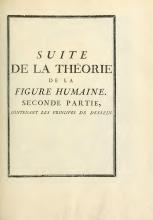
|
The text is the title page of the second part of a work on the theory of the human figure, focusing on the principles of drawing. It suggests a continuation of a series, emphasizing the study and depiction of the human form. |
| Rubens - Human Figure - Page 113 |
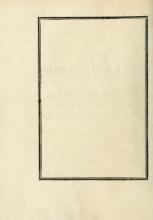
|
|
| Rubens - Human Figure - Page 114 |
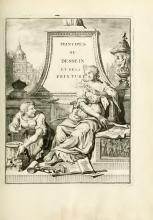
|
The image depicts the title 'Principles of Drawing and Painting,' indicating the focus on fundamental aspects of art. The presence of classical figures and elaborate architecture suggests an emphasis on traditional artistic principles. |
| Rubens - Human Figure - Page 115 |
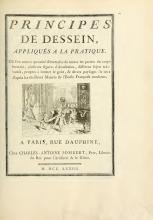
|
The text is the title page of a work discussing the principles of drawing as applied to practice, emphasizing human anatomy and varied subjects. It includes contributions from prominent artists of the modern French School. The book was published in Paris by Charles-Antoine Jombert in 1773. |
| Rubens - Human Figure - Page 116 |
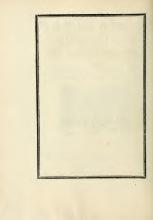
|
|
| Rubens - Human Figure - Page 117 |
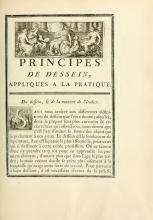
|
The text discusses the principles of drawing, defining it as the art of imitating objects visible to the eye. It emphasizes the importance of drawing as the foundation of painting, especially for those entering the profession, and the necessity of accuracy. Early instruction is advised while the hand is still adaptable. |
| Rubens - Human Figure - Page 118 |
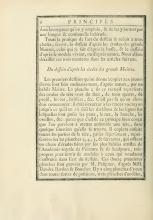
|
This text discusses the key principles of drawing, focusing on three main methods: drawing from the studies of great masters, from sculptures, and from live models or nature. It emphasizes the importance of beginning with simple drawings, such as head ovals, to understand the placement of facial features. The text outlines how students should progress through copying studies from the Royal Academy of Painting and Sculpture. |
| Rubens - Human Figure - Page 119 |

|
The text guides students through drawing human heads, emphasizing the parallel alignment of facial features and the importance of comparing parts and distances to achieve accuracy. It instructs on sketching, shading, and refining details while adhering to principles observed in the original work. The student is advised to practice from different angles and eventually draw other body parts, with examples found in subsequent plates. |
| Rubens - Human Figure - Page 120 |
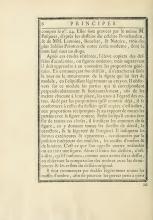
|
The text explains the process of copying and understanding the proportions of complete figures. It emphasizes the importance of observing and accurately sketching the model, focusing on proper alignment and proportional relationships. Finally, it discusses refining the drawing by enhancing details, character, shadows, and light. |
| Rubens - Human Figure - Page 121 |
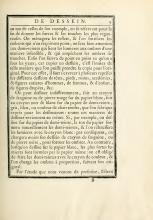
|
The text is about drawing techniques, emphasizing the importance of half-tones that smoothly transition light to shadows. It suggests practicing with different designs using sanguine or black and white pencils on various paper types to achieve realism. The text also differentiates between drawing on white and half-tone paper and how to handle highlights and shadows accordingly. |
| Rubens - Human Figure - Page 122 |
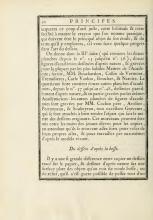
|
The text emphasizes the importance of developing a keen eye and practical skill in pencil drawing to master the art. It describes the plates of drawings by renowned academy masters, urging these to be used by students for practice. It also contrasts drawing from life with copying designs, highlighting the challenge of transitioning from two-dimensional to three-dimensional representation. |
| Rubens - Human Figure - Page 123 |
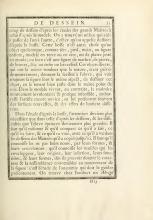
|
The document discusses transitioning in drawing techniques, highlighting the method of sketching from a bust, an object modeled in various materials. This static method helps students maintain consistent views compared to live models, which can confuse with movement. Emphasis is placed on anatomy knowledge to achieve accurate representation in figure movements. |
| Rubens - Human Figure - Page 124 |
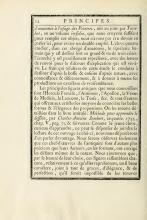
|
This text is about a book on anatomy for painters, providing an outline of its contents without duplicating existing work by Tortebat. It highlights the importance of studying human skeletons and ancient sculptures for understanding form and proportion. References are made to a detailed book by Jombert for further study, and the value of ancient artworks is noted for their correction of natural flaws and unparalleled beauty. |
| Rubens - Human Figure - Page 125 |
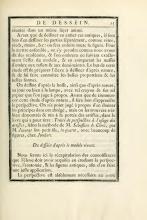
|
The text discusses drawing techniques, recommending that parts of ancient figures be drawn separately before assembling them into a complete figure. Shading is emphasized to effectively capture the model's effect. Learning perspective is essential, with additional resources suggested for deeper understanding. |
| Rubens - Human Figure - Page 126 |
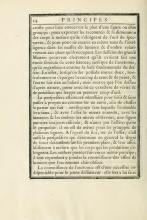
|
The text discusses the importance of understanding perspective, light, shadow, and anatomy in art. It emphasizes how these elements contribute to accurate and realistic representation in drawing and painting. Mastery of these skills saves time and effort and ensures the truth and precision of the artwork. |
| Rubens - Human Figure - Page 127 |
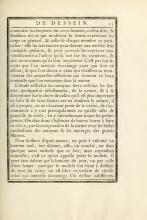
|
The text discusses the anatomical understanding of the human body and the importance of correctly representing muscles and movements in art. It emphasizes learning from the ancient masters to refine artistic technique, emphasizing grand and noble aspects while highlighting the beauty in natural forms. The process of drawing from life, including posing a nude model under natural lighting conditions, is also explored. |
| Rubens - Human Figure - Page 128 |
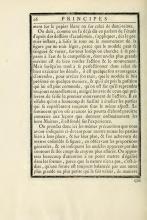
|
The text advises artists to start by capturing the essence of a figure with light strokes because models can tire and shift. It suggests mastering both action and movement before perfecting details, and sometimes waiting for a model to assume a natural position is beneficial. Emphasis is placed on correct placement, observing proportions, and ensuring natural variations in form to reflect the diversity in nature. |
| Rubens - Human Figure - Page 129 |
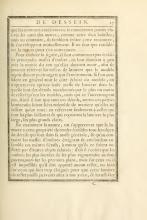
|
The text discusses the avoidance of direct alignment of external contours in art, exemplified by balusters. It provides guidance on shading techniques, emphasizing the connection between luminous parts and the importance of light reflections from surrounding objects. Additionally, it explains the properties of light and shadow in enhancing or obscuring the visibility of details. |
| Rubens - Human Figure - Page 130 |
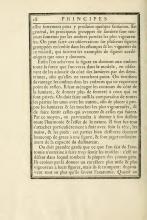
|
The text discusses principles of light, shadow, and rendering in drawing. It advises on balancing shadows and lights to create harmonious and natural effects, highlighting the importance of correctly shaping the head, hands, and feet. It warns against emphasizing muscles too much, a common mistake among young artists, which may only showcase their anatomy knowledge rather than enhance their drawing skill. |
| Rubens - Human Figure - Page 131 |
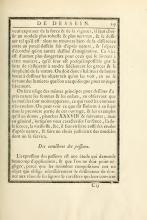
|
The text discusses the importance of choosing strong and realistic models for drawing, emphasizing that drawing from life leads to a more accurate and graceful depiction than drawing from imagination. It highlights the different considerations needed when drawing women and children. Additionally, it emphasizes the importance of expressing emotions in art, noting that even minor compositions require careful attention to effectively convey character. |
| Rubens - Human Figure - Page 132 |
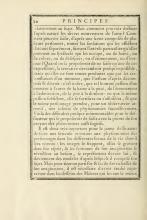
|
The text discusses the challenge for artists in capturing the transient expressions and emotions of people, emphasizing the difficulty due to their fleeting nature. It is crucial for aspiring artists to closely observe the variety of expressions in life, using these observations as models for their work. Studying the designs of renowned Masters is recommended to make effective use of one's imagination. |
| Rubens - Human Figure - Page 133 |
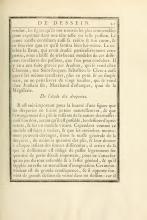
|
The text discusses suitable expressions for emotions in artistic depictions and references famous engravers like Le Brun and Audran. It emphasizes the importance of capturing drapery naturally in art and the challenges of working from live models, noting the need for imagination to fill in gaps. The concept of natural representation of fabric folds is highlighted as essential for artistic beauty. |
| Rubens - Human Figure - Page 134 |
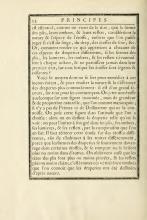
|
The text discusses the importance of accurately portraying the textures and characteristics of different fabrics in art. By studying how folds and reflections behave on a mannequin, artists can learn to depict draperies realistically. The repetition of this practice with various materials helps artists understand how different fabrics behave under light and shadow. |
| Rubens - Human Figure - Page 135 |
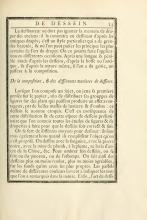
|
The text discusses the importance of understanding ancient draping techniques and applying them in art. It emphasizes the value of initial sketches and the arrangement of figures to create effective compositions through light and shadow. Different drawing tools and methods are mentioned, including the use of chalk, graphite, ink, and pastels to capture natural tones. |
| Rubens - Human Figure - Page 136 |
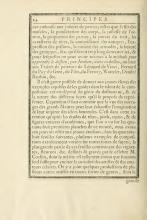
|
The text discusses the complexity of art, covering aspects like muscle effect, body balance, and the purity of line. It emphasizes the importance of learning from great masters and provides guidance via examples of compositions, with contributions from various artists. The book aims to inspire young students through diverse subjects and artistic examples. |
| Rubens - Human Figure - Page 137 |
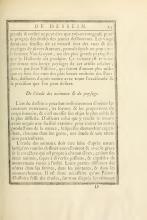
|
The text discusses the diversity and value found in the art of drawing, particularly landscapes and human forms. It highlights the contribution of the Dutch artist Van-Goyen and engraver Jean Visscher, emphasizing their accurate depictions of the Netherlands' landscapes. Additionally, the necessity of studying animals from life for historical painting is detailed, stressing the unique movements and forms of animals compared to humans. |
| Rubens - Human Figure - Page 138 |
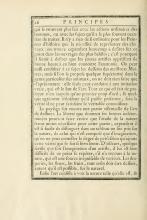
|
The text discusses the importance of understanding anatomy and nature for artists, emphasizing that true imitation comes from studying nature. It suggests young artists consult the designs of great Masters and highlights landscape drawing as a key part of artistic practice. The passage concludes by asserting that art is about seeing nature as it truly is. |
| Rubens - Human Figure - Page 139 |
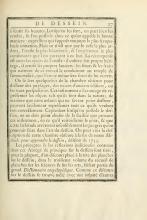
|
The text discusses the art of drawing, emphasizing the importance of careful imitation and the zeal, study, and experience needed to achieve proficiency. It advises against over-reliance on the camera obscura, a tool that helps depict accurate images even for those without drawing skills, as it may hinder artistic progress. The text explains that the principles discussed are drawn from a larger body of work related to the sciences and arts. |
| Rubens - Human Figure - Page 140 |
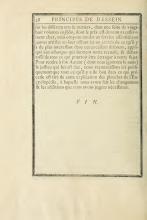
|
The text explains the purpose of providing an excerpt from a series of twenty-eight volumes related to arts and crafts, aiming to aid young artists. This excerpt includes the most interesting parts of the discourse, focusing on prints relevant to their collection and removed from unrelated content. It acknowledges the original author and highlights necessary changes made to the Encyclopedia's explanations. |
| Rubens - Human Figure - Page 141 |
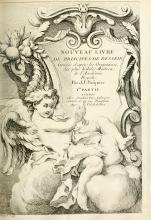
|
The image shows the title page of a book titled "New Book of Drawing Principles" by J.J. Pasquier. It includes engravings inspired by the original works of the most skilled masters of the Royal Academy, with publication details indicating it was printed in Paris by Jombert Father. The book had official permission from the King for its publication. |
| Rubens - Human Figure - Page 142 |
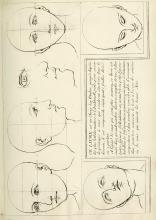
|
This page details a book that is a curated collection of studies by esteemed masters from the Royal Academy of painting and sculpture. It includes numerous portraits and sculptural studies aimed at both perfecting skilled artists and aiding beginners. The book is intended as a comprehensive guide for developing artistic technique according to customary standards of the time. |
| Rubens - Human Figure - Page 143 |
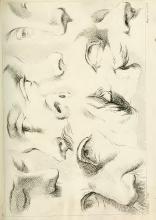
|
The text on the page is minimal, simply noting "Written with care. P. R." The accompanying image is a detailed study of human facial features, specifically eyes and noses. It captures various angles and expressions, showcasing an anatomical study. |
| Rubens - Human Figure - Page 144 |

|
|
| Rubens - Human Figure - Page 145 |
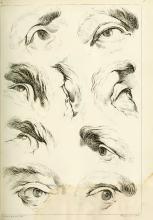
|
The text credits André Barbu as the artist and Huquier as the engraver for C.P.R. It serves as a label accompanying the sketches of eyes. These annotations identify the creators involved in the production of the engraved plates within this historic work. |
| Rubens - Human Figure - Page 146 |
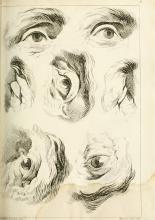
|
The image contains text noting that Pieter Barlom drew and Heupler engraved the illustrations. The engravings depict various expressions of facial features like eyes, a nose, and part of a mouth, highlighting the study of human anatomy in art. |
| Rubens - Human Figure - Page 147 |
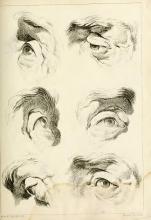
|
The text 'Pinxit Barlen, del' is a partial attribution possibly indicating the artist responsible for the engraving. 'Pinxit' means 'painted by', suggesting these images were originally painted by the artist before being engraved. |
| Rubens - Human Figure - Page 148 |
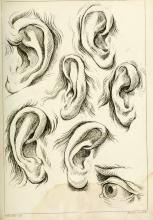
|
The text identifies the contributors to the engravings, with "P. Boucher" as the artist and "Haquert" as the engraver. These details highlight the collaborative effort in producing the anatomical illustrations in the book. |
| Rubens - Human Figure - Page 149 |
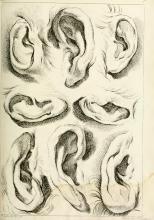
|
The text simply contains the artist's name, Theodore Barlou, and the chapter reference 'Chap. c. 6 B. R.' accompanying the images of ears. It does not provide further descriptive content. |
| Rubens - Human Figure - Page 150 |
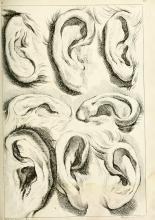
|
The image contains minimal text, with only the identifiers "A" and "10." The primary focus is on the engraved illustrations of human ears, designed to study their anatomical features. |
| Rubens - Human Figure - Page 151 |
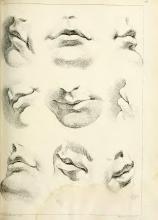
|
|
| Rubens - Human Figure - Page 152 |

|
This is 'Plate XI' of the work, created by Lambert Boudon and engraved by Boquier. The plate is drawn from the Royal Collection, suggesting its prestigious and authoritative context. |
| Rubens - Human Figure - Page 153 |

|
This text is the title and attribution page for the second part of a drawing principles treatise. It mentions that the content is engraved according to the Royal Academy's standards and credits J.J. Pasquier as the author. The publication took place in Paris by the bookseller to the king, Jombert, Père. |
| Rubens - Human Figure - Page 154 |
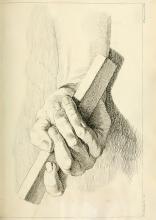
|
|
| Rubens - Human Figure - Page 155 |
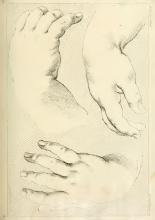
|
The image contains engravings from Plate 11, with original design by an artist indicated as H. V., and engraving done by Ch. de Moelder. It illustrates different views of a hand, highlighting the anatomical intricacies. The focus is on showcasing artistic techniques in rendering the human figure. |
| Rubens - Human Figure - Page 156 |
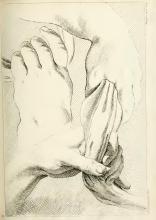
|
The text is a label indicating this is "Marguette no. 13," a numbered illustration reference. It suggests this is part of a series of artistic studies or elements from the book. The numbering helps in identifying or cataloging the illustrations within the collection. |
| Rubens - Human Figure - Page 157 |
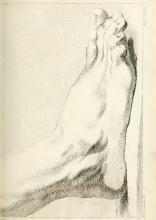
|
The text is a short annotation on the engraving, indicating it is based on a master painting. It reflects the practice of creating engravings from renowned artworks. This note adds context to the detailed anatomical illustration. |
| Rubens - Human Figure - Page 158 |
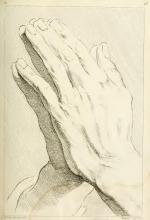
|
The text includes a letter 'B' and notes that the drawing was made by Ed. Boucherlen and the engraving was done by Hayev after C.P.R. The page is an artistic study of hands, reflecting the instructional nature of the book on human anatomy. |
| Rubens - Human Figure - Page 159 |
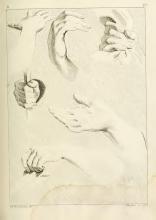
|
The text on the page indicates that the illustrations were drawn by Ed Bouchardon and published by Huquier. These engravings demonstrate detailed studies of human hands, showcasing their movement and gestures. |
| Rubens - Human Figure - Page 160 |
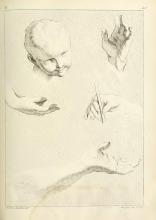
|
The text in the image includes a page number "B" and "20", along with attribution to the artist F.-L. Bouchardon, who drew the figures, and Huquier, who engraved them. The work was done at Charles Pierre Robert. |
| Rubens - Human Figure - Page 161 |
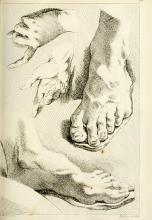
|
The image contains detailed artistic sketches of human hands and feet designed for studying human anatomy. These illustrations focus on the shapes and structures important for artists learning to draw human figures accurately. No translatable text was present, only detailed anatomical drawings. |
| Rubens - Human Figure - Page 162 |
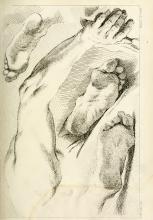
|
The image features anatomical illustrations of human hands and feet, detailed with precision. They demonstrate the musculature and anatomical structure using cross-hatching techniques for shading and depth typical of 18th-century engravings. |
| Rubens - Human Figure - Page 163 |
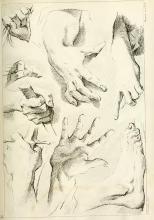
|
|
| Rubens - Human Figure - Page 164 |
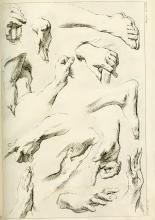
|
|
| Rubens - Human Figure - Page 165 |
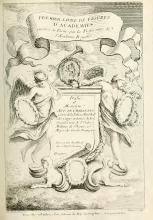
|
This title page introduces the "First Book of Academy Figures," partially engraved by professors of the Royal Academy. It is dedicated to a high-ranking official, the Count of La Palice, and is presented by Huquier, the servant. The publication details indicate it was distributed by a bookseller of the King in Paris. |
| Rubens - Human Figure - Page 166 |

|
The text credits Colin de Vermont as the designer and engraver of the artwork. It highlights the artist’s role in creating the engraving. |
| Rubens - Human Figure - Page 167 |
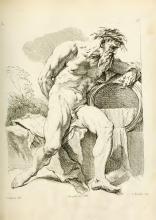
|
The text identifies the artists involved in the creation of the engraving. C. Natoire drew the original design, C. Nicoleon engraved it, and Humphier executed it based on C.P.R.'s guidelines. These attributions illustrate the collaborative process in creating detailed anatomical studies. |
| Rubens - Human Figure - Page 168 |
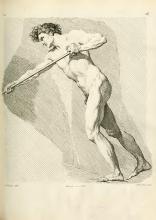
|
The text credits C. Aveline and C.N. Cochin as engravers, with the work printed by Haquet from C.P.R. These are likely contributors to the engravings of the book from which this page is taken. |
| Rubens - Human Figure - Page 169 |
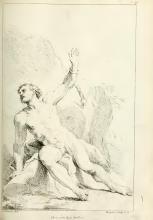
|
The text identifies the artist who drew the image as C. Natoire and mentions that it is created with the privilege of the King. It also indicates that this is part of a chapter involving sculpture and engraving work. The page likely belongs to a series of engravings focusing on human figures, their position, and anatomy in art. |
| Rubens - Human Figure - Page 170 |
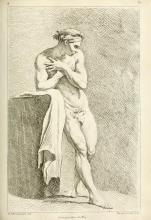
|
The text includes the name 'Ed. Bouchardon' and mentions the royal privilege given to Huquier for sculpting and publishing. It indicates the involvement of notable individuals in the creation and distribution of the work. |
| Rubens - Human Figure - Page 171 |
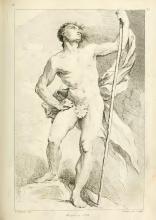
|
The text on the page seems to identify the engaving artists associated with the work. |
| Rubens - Human Figure - Page 172 |
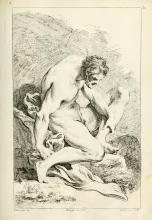
|
The text on the page indicates that the engraving was conceived by F. Boucher, executed by Huquier, and engraved by Aveline, junior. This information credits the artists involved in creating the illustration. The image showcases a depiction of the human figure according to the principles discussed by Peter Paul Rubens. |
| Rubens - Human Figure - Page 173 |
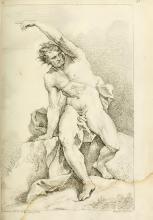
|
The text is a note indicating that someone named Natoire was responsible for drawing, engraving, and printing the image. This detail underscores the craftsmanship involved in producing the engraving. |
| Rubens - Human Figure - Page 174 |
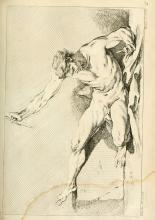
|
|
| Rubens - Human Figure - Page 175 |
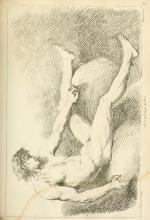
|
The only text discernible on the page is 'By the privileges of the King', suggesting official sanction for the engraving. The main content is an image depicting a nude male figure in a dynamic pose, emphasizing human form and movement, part of an artistic anatomy study. |
| Rubens - Human Figure - Page 176 |
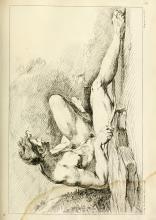
|
The illustration is labeled as Plate 36 and features an engraving that appears to study the anatomy of a male figure, which connects to concepts of body dynamics explored by Rubens. There is also a brief text in French that translates roughly to "Eight potatoes of concert - Veprics," which may refer to a specific artistic analogy or metaphor used historically. The visual emphasizes the interaction of muscle and form in static and dynamic poses. |
| Rubens - Human Figure - Page 177 |
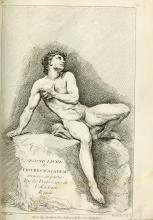
|
The text introduces the 'Second Book of Academy Figures,' which includes engravings by the Royal Academy's professors. This suggests a collection educational in nature, likely for artists studying human figures. |
| Rubens - Human Figure - Page 178 |
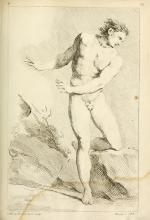
|
The text identifies Collin de Vermont as the artist who designed and created the sculpture. It also notes that Huquier published the work under the initials C.P.R. |
| Rubens - Human Figure - Page 179 |
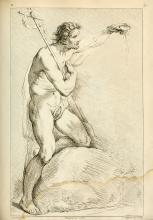
|
The text includes the letter 'B' and mentions individuals involved in the preparation and engraving of the artwork, such as "Chaste eves del" and "J. Peronneau Sculp." It also references "Haquion after C.P.R.," likely indicating the artist or engraver's source or inspiration. These notes are typical in historic engravings and denote authorship and artistic contribution. |
| Rubens - Human Figure - Page 180 |
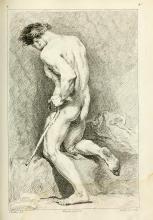
|
The text contains annotations related to the illustration, crediting the artists and engravers involved. It mentions "C. Vanden del" and "Aveline, inv. Sculp," referring to the creators of the engraving. These notes accompany the artistic depiction, likely as part of the book's documentation approach. |
| Rubens - Human Figure - Page 181 |
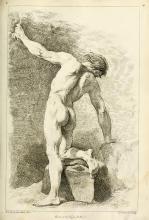
|
This image credits Ed. Boucheraden as the artist of the illustration, with the work being endorsed by a royal privilege. The artwork is part of a series exploring human anatomy and form. |
| Rubens - Human Figure - Page 182 |
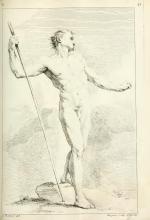
|
The image credits the drawing to C. Natoire and the engraving to Huguier, with the number '42' marked. It showcases a male figure, demonstrating principles of human figure drawing. The emphasis is on anatomical accuracy and dynamic pose, in keeping with the book's focus on figure study. |
| Rubens - Human Figure - Page 183 |
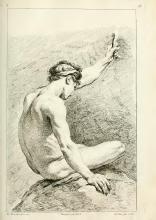
|
The text credits the design and sculpture to Bouchardon, Huquier, and Aveline. They were involved in the artistic process of this engraved plate. The work reflects a collaborative effort in capturing the human figure. |
| Rubens - Human Figure - Page 184 |
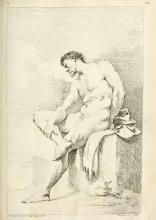
|
The text describes the creators of the artwork: C. Natoire designed and sculpted it while Buqouer executed it. The artwork appears to depict an almost nude male figure and is part of anatomical or artistic studies by Rubens. |
| Rubens - Human Figure - Page 185 |
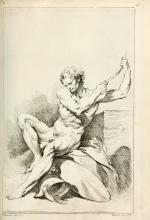
|
The engraving depicts a dynamic and detailed anatomical study of a seated male figure engaged in pulling a cloth or rope. This image highlights the tension and definition of muscles, showcasing Rubens' expertise in human anatomy typical of the Baroque era. Surrounding elements suggest a classical theme, contributing to the overall artistic expression. |
| Rubens - Human Figure - Page 186 |
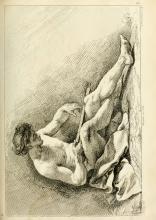
|
The text '40' is translated directly as '40', likely indicating a page or plate number from the book. The image is an illustration related to human anatomy and art, based on designs by Rubens. It's part of a series exploring human figures in art and movement. |
| Rubens - Human Figure - Page 187 |
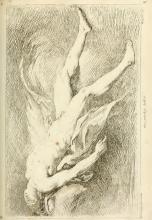
|
The text mentions "With the privilege of the King," indicating that the engraving was authorized under royal privilege. The drawing is part of a study on the human figure by Peter Paul Rubens, focusing on anatomy in motion. This particular plate illustrates a dynamic pose with detailed anatomical precision. |
| Rubens - Human Figure - Page 188 |
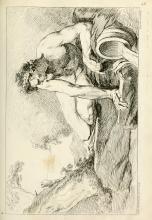
|
The text indicates that this is Plate 48. The image illustrates a muscular male figure seated in a pose that highlights anatomical features, demonstrating principles of motion and rest. |
| Rubens - Human Figure - Page 189 |
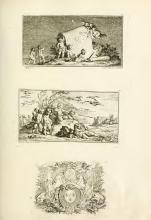
|
|
| Rubens - Human Figure - Page 190 |
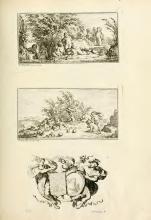
|
The text consists mainly of captions for the images, identifying one of the engravers as C. Silvestre, who invented and engraved the scenes. Another artist, A. Schoharide, is credited with making one of the pieces. These captions suggest a collaborative effort in the creation of the artworks. |
| Rubens - Human Figure - Page 191 |
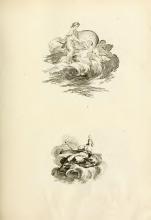
|
|
| Rubens - Human Figure - Page 192 |
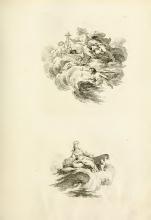
|
The image contains text labeled 'PHISICAE', which translates to 'Physics'. It accompanies a set of allegorical renderings reflecting scientific themes. |
| Rubens - Human Figure - Page 193 |
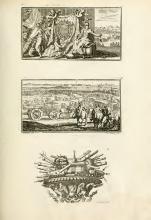
|
The image contains three detailed engravings from a historic book by Peter Paul Rubens. These plates illustrate allegorical figures, a military procession, and a poised arrangement of artillery, showcasing the artistic and thematic depth typical of 18th-century engraving. The scenes emphasize history, might, and artistic grandeur. |
| Rubens - Human Figure - Page 194 |
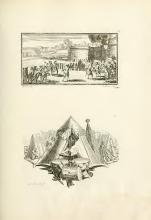
|
The text provides credits to artists involved in the creation of the depicted engravings. Le Pautre is mentioned as the creator of one of the illustrations, while Chartrand is credited for the other. These engravings are part of the work translated from Latin, highlighting historical scenes and objects. |
| Rubens - Human Figure - Page 195 |
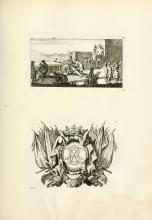
|
There is no text on the page for summary. It contains only images. |
| Rubens - Human Figure - Page 196 |

|
|
| Rubens - Human Figure - Page 197 |
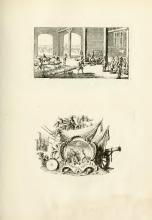
|
|
| Rubens - Human Figure - Page 198 |
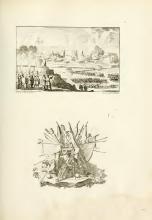
|
The text notes that the drawing was created by someone named Nob. de Clerck. The page includes two engravings depicting scenes of military activity and equipment. |
| Rubens - Human Figure - Page 199 |
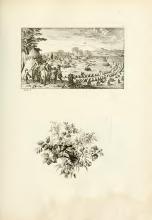
|
The page features two engravings: a military landscape and a decorative floral illustration. These images are likely part of a work by Peter Paul Rubens, showcasing his interest in both narrative scenes and detailed ornamental designs. The engravings highlight the artistic and engraving techniques of the 18th century. |
| Rubens - Human Figure - Page 200 |
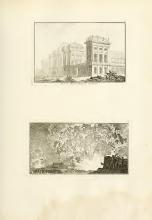
|
The image contains French text describing two engravings. The first engraving is of the Royal Military School, while the second depicts a scene labeled as a war or advancement of Spain. Some abbreviations and partial texts are included, which lack complete clarity in meaning. |
| Rubens - Human Figure - Page 201 |
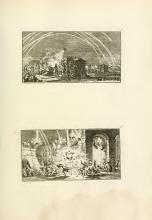
|
The page features two illustrated scenes of dramatic explosions with people depicted in motion amidst the chaos. The top text references the lifting of a summer event or gathering, while the bottom text describes an explosive event from a bombardment mortar. |
| Rubens - Human Figure - Page 202 |
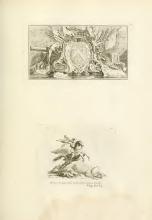
|
The text describes an engraving by Auxilliarie, depicting elements related to Virgil's Aeneid, specifically noting themes of war and fields. The accompanying images reflect classical themes and are emblematic of Rubens' artistic style. |
| Rubens - Human Figure - Page 203 |
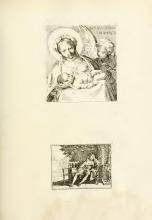
|
The page contains engravings captioned with the artist's name, "ANIBAL CARACI INVENTED." The first image may be religious in nature, showing a woman, child, and angel, while the second depicts a contemplative man in a garden scene. |
| Rubens - Human Figure - Page 204 |
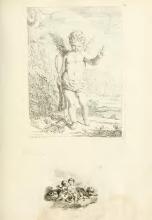
|
The text identifies the engravings and credits "S.B." for creating the images and "B. Le Beau" for designing and engraving them. The images are illustrative of artistic techniques from the 18th century, reflecting the detailed work of the period. |
| Rubens - Human Figure - Page 205 |
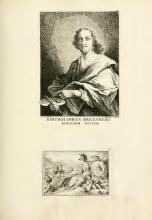
|
The text identifies Bartholomeus Breenberg as a painter known for rural scenes. Two engravings show a portrait of Breenberg and an allegorical scene representing artistic themes. |
| Rubens - Human Figure - Page 206 |
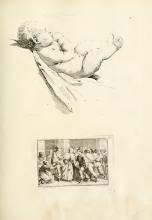
|
This page contains two illustrations, one of a child and the other of several adults in an event or gathering. There is minor text in French indicating the illustrations are from Paris. The detailed images reflect artistic techniques from the late 1700s. |
| Rubens - Human Figure - Page 207 |
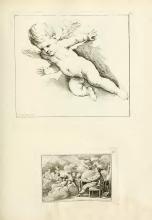
|
|
| Rubens - Human Figure - Page 208 |
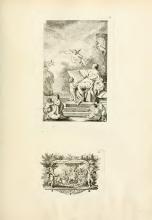
|
A small illustration contains a Latin inscription suggesting the progression from clever childhood to serious adulthood. |
| Rubens - Human Figure - Page 209 |
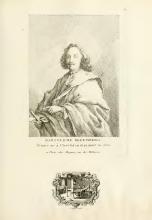
|
The text describes a portrait of Bartolome Breemberg, a painter born in Utrecht in 1620 and who died in 1660. It mentions the engraving was made by A. Diepen and includes a Latin phrase translating to "I return life to the dead." The page provides historical context and artistry through its elegant presentation. |
| Rubens - Human Figure - Page 210 |

|
The Latin phrase translates to expressing the wonder of unveiling truth through reason. The text accompanies artistic engravings, likely emphasizing the theme of uncovering hidden truths in art and mythological narratives. |
| Rubens - Human Figure - Page 211 |
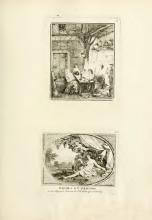
|
The text under the second image states that it is titled "Bacchus and Erigone" and was engraved by P. Aveline from a design by S. Le Clerc. The image appears to depict a classical mythological scene. |
| Rubens - Human Figure - Page 212 |
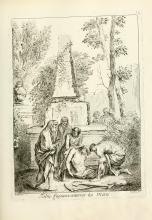
|
The engraving depicts Tobias overseeing the burial of dead individuals. It suggests a biblical or historical narrative, with a focus on the act of burying the deceased. |
| Rubens - Human Figure - Page 213 |
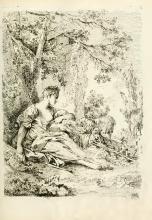
|
|
| Rubens - Human Figure - Page 214 |
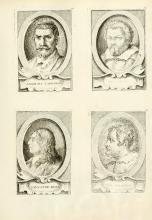
|
The text on the page features the names of two artists: Annibale Carracci and Salvator Rosa. These names are inscribed beneath their respective engraved portraits. The page overall presents detailed historical portrayals of significant figures in the art world. |
| Rubens - Human Figure - Page 215 |
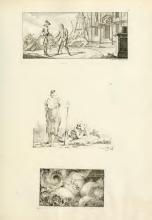
|
The text on the page simply indicates "Page 75." The primary focus is on the three illustrative engravings present on the page. These images likely align with Peter Paul Rubens' artistic theories and designs. |
| Rubens - Human Figure - Page 216 |
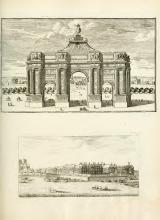
|
|
| Rubens - Human Figure - Page 217 |
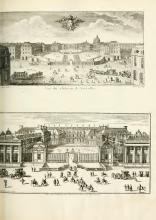
|
The text describes two views of the Palace of Versailles. The first is a general view, while the second focuses on the courtyard side. Both highlight the architectural grandeur of the palace. |
| Rubens - Human Figure - Page 218 |
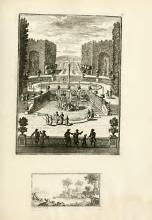
|
|
| Rubens - Human Figure - Page 219 |
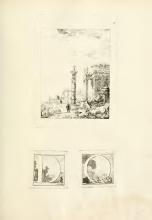
|
|
| Rubens - Human Figure - Page 220 |
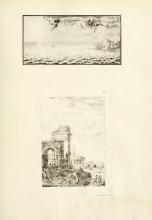
|
The Latin phrase 'SOL MOVET UNDE LUCET' translates to 'The Sun Moves from Where it Shines,' likely reflecting a philosophical or astronomical idea. The page also contains two engraved images depicting a classical scene and a decorated motto. |
| Rubens - Human Figure - Page 221 |
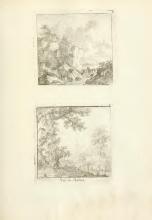
|
The text on the page is a simple caption "View of Boferez," which accompanies a pastoral landscape depicted in the engraving. |
| Rubens - Human Figure - Page 222 |
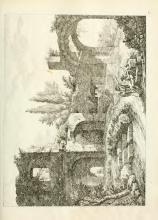
|
|
| Rubens - Human Figure - Page 223 |
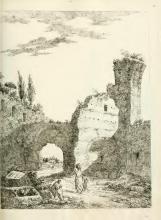
|
|
| Rubens - Human Figure - Page 224 |
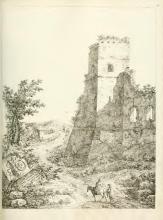
|
|
| Rubens - Human Figure - Page 225 |
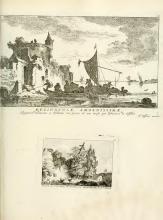
|
The image features two artworks. The first is a landscape by Johan van Goyen, elegantly crafted and engraved by Johann de Visscher, showcasing charming natural scenery. The second is a sequence of landscapes invented and engraved by J. Aveline. |
| Rubens - Human Figure - Page 226 |
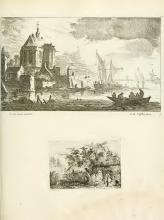
|
The text credits I. van Goyen as the inventor and I. de Vischer as the maker of the engravings. These are likely artistic attributions. The engravings are part of an art book featuring historic compositions. |
| Rubens - Human Figure - Page 227 |
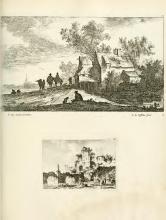
|
The text in the image indicates that I. van Goyen is credited with the invention of the depicted scenes and I. de Vissher with their engraving. These engravings show typical pastoral and historical themes of Flemish art. |
| Rubens - Human Figure - Page 228 |
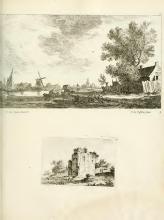
|
The text identifies the creators of the engravings as I. van Goyen, the inventor, and I. de Vylder, the engraver. These names are noted below the images on the page. |
| Rubens - Human Figure - Page 229 |

|
The text identifies the creators of the images: I. van Goyen as the inventor or original artist, and I. de Vissher as the engraver. It also includes a page number, '5'. These terms indicate the contributions to the creation and production of the artwork on the page. |
| Rubens - Human Figure - Page 230 |
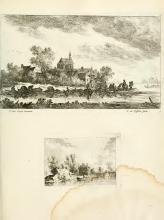
|
The text credits the creation and production of the images to two individuals, with I: van Goyen as the inventor and I: de Visscher as the maker. These brief inscriptions indicate the collaborative nature of image creation during this period in art. |
| Rubens - Human Figure - Page 231 |
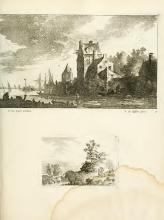
|
The text credits J. van Goyen with creating the original design and I. de Vischer with executing the engraving. This information accompanies the illustrations on the page. The page is part of a historic book on artistic theory by Peter Paul Rubens, translating concepts for understanding and creating human figures. |
| Rubens - Human Figure - Page 232 |
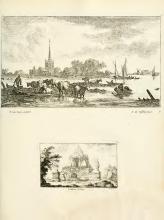
|
The inscriptions refer to the creators and executors of the artworks. Van Goyen conceptualized the top pastoral scene, while de Visscher engraved it. The lower image is titled "Ancient Tomb," illustrating a classical architectural structure. |
| Rubens - Human Figure - Page 233 |

|
The text credits the artwork to I. van Goyen as the creator and I. de Visscher as the engraver, with further engraving work by Chassel. These details accompany two engraved illustrations on the page. |
| Rubens - Human Figure - Page 234 |
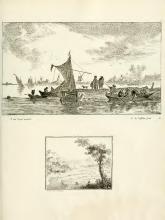
|
The text identifies Jan van Goyen as the inventor of the compositions and F. de Vissher as the engraver. The engravings illustrate typical life scenes along a river and a pastoral landscape. The terms "inventor" and "fecit" indicate the original designer and the engraver of the images respectively. |
| Rubens - Human Figure - Page 235 |
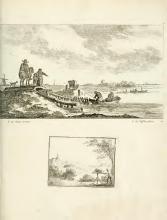
|
The engravings are credited to I van Geijen as the inventor and I de Vylder as the artist who executed the work. Both feature rural landscapes and scenes of daily life in nature. |
| Rubens - Human Figure - Page 236 |
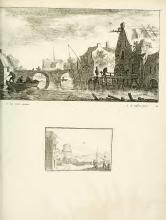
|
The text indicates the creators of the engravings: I van Oyen, who designed the work, and I de Witte, who created it. These terms highlight their roles in producing the artwork, typical of historical art books showing attributions. |
COPYRIGHT © 2025 STUDY DRAWING. ALL RIGHTS RESERVED.